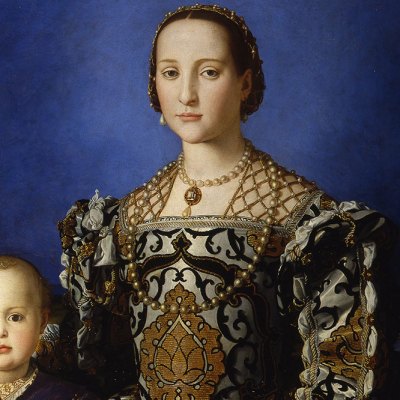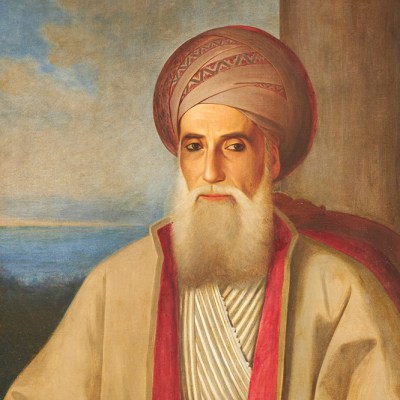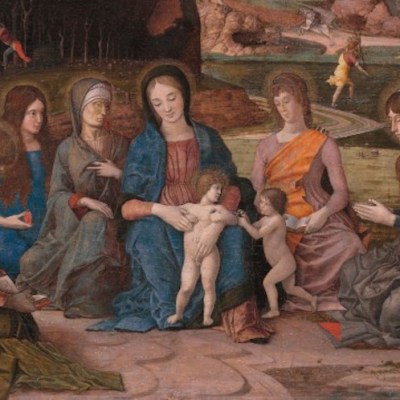 ‘Four things to see this week’ is sponsored by Bloomberg Connects, the free arts and culture app. Bloomberg Connects lets you access museums, galleries and cultural spaces around the world on demand. Download the app here to access digital guides and explore a variety of content.
‘Four things to see this week’ is sponsored by Bloomberg Connects, the free arts and culture app. Bloomberg Connects lets you access museums, galleries and cultural spaces around the world on demand. Download the app here to access digital guides and explore a variety of content.
Each week we bring you four of the most interesting objects from the world’s museums, galleries and art institutions, hand-picked to mark significant moments in the calendar.
Born on 1 September 1576, Scipione Borghese would go on to become one of the most powerful men in 17th-century Rome. In 1605, in a powerful act of nepotism, his uncle Pope Paul V made Borghese both a cardinal and a papal secretary – positions through which he amassed an immense income. He used this wealth to build one of the most impressive art collections in Europe. As well as collecting Roman antiquities and Renaissance masterpieces, he commissioned contemporary artists such as Bernini and Caravaggio to produce sculptures and paintings that have come to epitomise the Baroque aesthetic.
Borghese is just one of many influential patrons who have helped to shape the Western canon. Historical figures such as Cosimo de’ Medici and Isabella d’Este as well as contemporary patrons such as Peggy Guggenheim and Charles Saatchi have supported artists by not only providing funds, but also introducing them to other artists and key tastemakers, opening up opportunities for prestigious public and private commissions. This week we take a look at four works of art that testify to the importance of artistic patronage.
David with the Head of Goliath (1605–10), Caravaggio. Villa Borghese, Rome
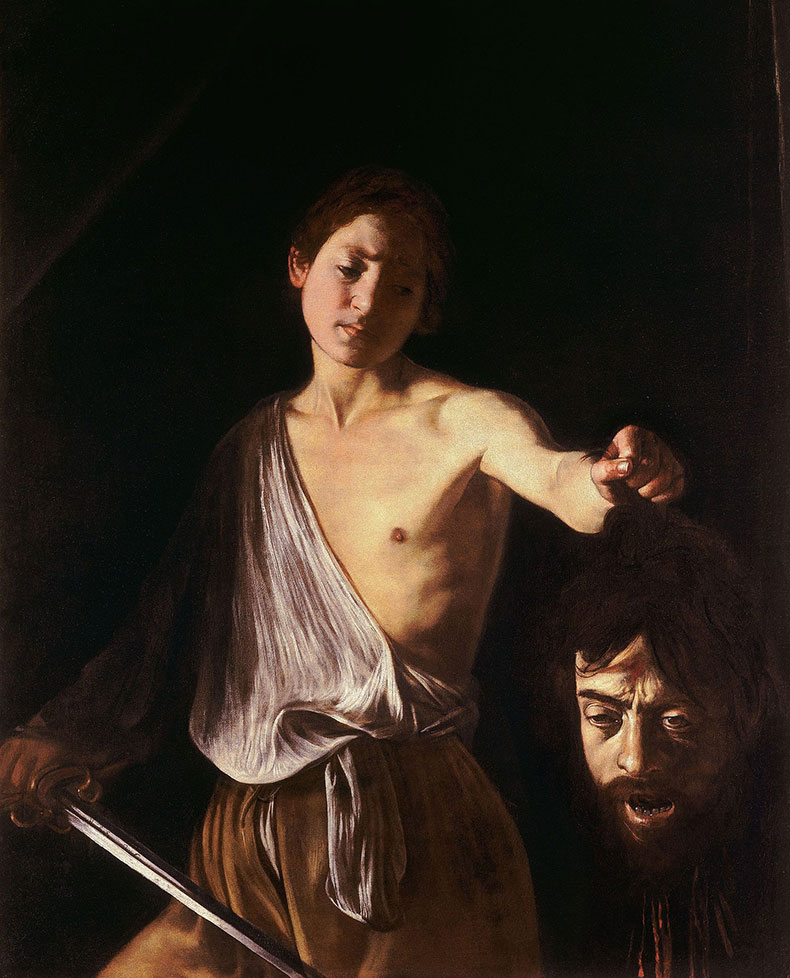
1. David with the Head of Goliath (1605–10), Caravaggio
Villa Borghese, Rome
The young cardinal kept his collection in the eponymous Villa Borghese in Rome, now a museum. Today visitors can admire its opulent interiors and many commissioned artworks, including Caravaggio’s depiction of David holding the severed head of Goliath. It is said that Caravaggio chose this subject in the hope of eliciting Borghese’s sympathy – and an all-important papal pardon – for his own murder of a man in a brawl. Click here to find out more.
Landscape with the Flight into Egypt (1624) Roelandt Savery. National Gallery of Art, Washington, D.C

2. Landscape with the Flight into Egypt (1624), Roelandt Savery
National Gallery of Art, Washington, D.C.
While Borghese’s taste helped shape the Baroque in Italy, the Holy Roman Emperor and King of Hungary Rudolf II was a hugely influential figure in the evolution of Northern mannerism. His cabinet of curiosities became an all-consuming obsession – some have suggested to the detriment of his role as head of state – and included ‘the three kingdoms of nature and the works of man’. As well as collecting masterworks by Dürer, Brueghel and Arcimboldo, Rudolf cultivated close relationships with artists such as Bartholomeus Spranger and Roelandt Savery, whose Landscape with the Flight into Egypt is thought to reference the mountainous views the artist encountered while under the monarch’s patronage. Click here to find out more.
Earrings for Peggy Guggenheim (c. 1938), Alexander Calder. Peggy Guggenheim Collection, Venice
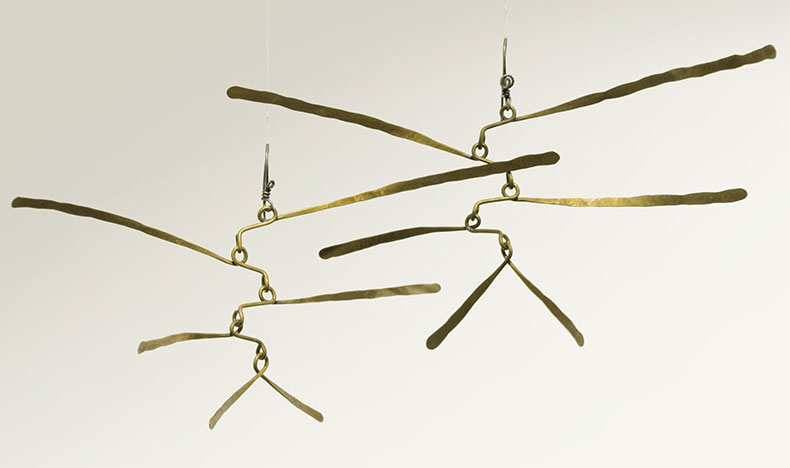
3. Earrings for Peggy Guggenheim (c. 1938), Alexander Calder
Peggy Guggenheim Collection, Venice
Along with Isabella d’Este and Isabella Stewart Gardner, Peggy Guggenheim is a rare female figure in the history of patronage. Like her uncle Solomon R. Guggenheim, she used her wealth to promote the work of avant-garde artists such as Jean Cocteau, Henry Moore and Alexander Calder, who made her this pair of earrings based on his abstract mobiles. Commenting on her jewel box of a collection, now on public display in her house in Venice, she said: ‘I made it my life’s work. I am not an art collector. I am a museum.’ Click here to find out more.
upside mimi ᴉɯᴉɯ uʍop (2021), Rachel Maclean, Photo: Amelia Claudia; courtesy Jupiter Artland
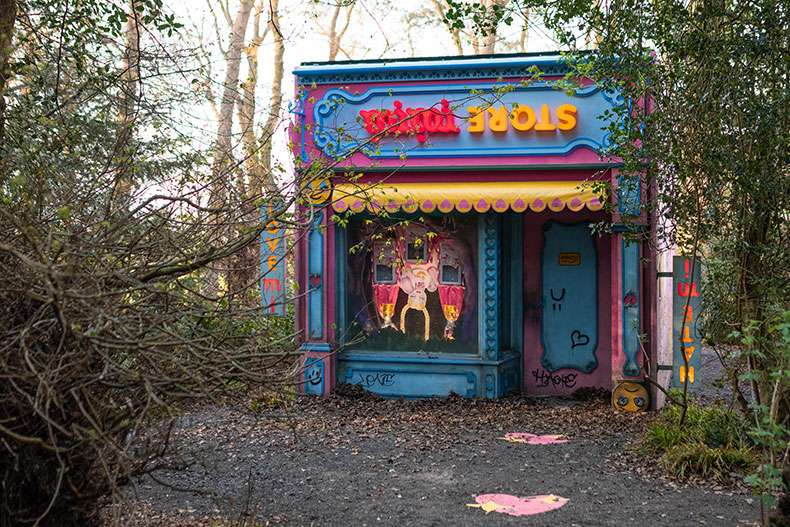
4. upside mimi ᴉɯᴉɯ uʍop (2021), Rachel Maclean
Jupiter Artland, Edinburgh
Bringing the lineage of great patrons into the present day, Nicky and Robert Wilson have used their fortune – derived from Nelson’s homoeopathic products, including the bestselling Rescue Remedy – to purchase bespoke artworks from figures such as Cornelia Parker and Anya Gallaccio. These have found their home in Jupiter Artland, the couple’s 100-acre sculpture park outside Edinburgh. In 2021 the couple commissioned Rachel Maclean to make upside mimi ᴉɯᴉɯ uʍop: a shop-shaped installation that explores the death of the high street and the pitfalls of capitalism with colourful animations. Click here to find out more on the Bloomberg Connects app.
Download now
![]() ‘Four things to see this week’ is sponsored by Bloomberg Connects, the free arts and culture app. Bloomberg Connects lets you access museums, galleries and cultural spaces around the world on demand. Download the app here to access digital guides and explore a variety of content or scan the QR code.
‘Four things to see this week’ is sponsored by Bloomberg Connects, the free arts and culture app. Bloomberg Connects lets you access museums, galleries and cultural spaces around the world on demand. Download the app here to access digital guides and explore a variety of content or scan the QR code.

